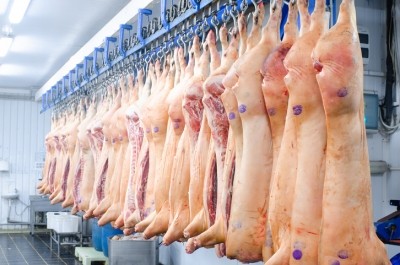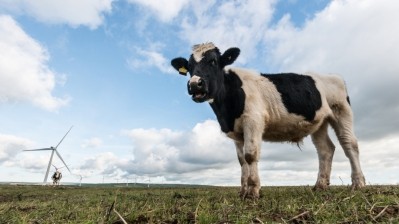DSM banking on CleanCow and targeted eubiotics but analyst not wowed by newly cast strategy

As part of its Capital Markets Day last week, the chemical giant laid out objectives for its animal and human nutrition division for the next three years.
On the animal side, DSM said it sees further growth opportunities for its feed ingredient business beyond the historical core area of poultry and swine and predicted it will continue to outperform the market.
Declan Morrissey, food, beverage and pharmaceutical analyst at Davy Research, told us while little in DSM’s 2016-2018 animal nutrition strategy was really trailblazing, innovations such as the feed enzyme targeting lower ruminant methane emissions due for release in three years’ time and the plan to build six new premix facilities in the period are definitely developments worth noting.
The Netherlands headquartered DSM said its methane reduction ingredient, CleanCow, will target markets with highly developed dairy production systems. It will be launched in 2018 and will see a cut in those emissions of between 25 to 30%.
It is predicting triple-digit sales for that sustainable livestock production orientated enzyme.
The company also outlined plans to double sales in the next five years of next generation feed enzymes and eubiotics tailored to local animal production requirements and developed and tested in local animal feed research centers.
Beyond pigs and poultry
Additionally, DSM predicted growth in nutrition sales for animal species beyond its core portfolio, forecasting a compound annual growth rate (CAGR) in product sales from 2016 to 2018 of 3 to 4% in the ruminant category, 6 to 7% in the aqua segment and 7 to 8% on the pet nutrition side.
And it further highlighted its objectives to establish the new industry standard for algae based omega-3 fatty acids for animal nutrition, reduce the mortality rate in shrimp, tilapia, salmon and trout production systems and improve feed utilization across all farmed fish species.
The Dutch group said it will also focus its ingredient innovation platform on animal fertility and calf health.
In tandem with expansion of its global premix network, the enzyme maker said it is developing a dedicated new brand of premix for mid-sized farms — 50 to 500 pigs — in China.
Looking at Latin America, DSM flagged up its aim to grow its Tortuga business beyond Brazil.
Job cuts and streamlining
To support its growth plans, the company outlined cost efficiency programs including approximately 100 nutrition unit job losses that it said should see it incur savings of between €250 and €300m by the end of 2018.
In August, DSM already announced operational adjustments that would see 900 to 1,100 global company job losses. The enzyme producer employs around 25,000 worldwide.
Meanwhile, the company reported positive Q3 results last Tuesday.
It said earnings before interest, taxes, depreciation and amortization (EBITA) for its nutrition business was 5% lower at €213m compared to Q3 2014.
Nutrition sales for the quarter jumped 15%, driven by “very strong” volume growth in animal nutrition and health with “solid” volume developments in human nutrition and health.
“If you strip out the divestments from earlier this year – the non-core polymer intermediaries — these are good results.
There had been a lot of uncertainty in the nutrition business at the start of the year especially on the dietary supplements and omega-3 fish oil side but we are beginning to see good organic growth in the whole division now and the stock is trading up today as a result of that performance and the full year guidance being maintained,” said Morrissey, commenting on the results.
Overall, DSM said the volume growth in nutrition and positive foreign exchange rates largely offset the lower vitamin E prices — of more than €30m — and the strong Swiss franc.









